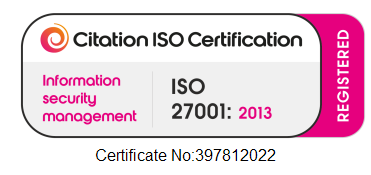
Let’s be honest, compliance isn’t the most exciting thing to talk about. But if you’re in government, you know it’s non-negotiable. One missed acknowledgement or an out-of-date process, and suddenly you’re facing audit failures, fines, or worse - a loss of public trust.
That’s why internal communications compliance matters. It’s not just about ticking regulatory boxes, it’s about making sure every employee gets the right message, understands it, and can prove they acted on it.
What is internal comms compliance?
Internal comms compliance is the process of making sure critical communications are delivered, acknowledged, and auditable. For governments, it’s a way of showing regulators that the right people got the right information at the right time, and that there’s proof to back it up.
For example:
- A council rolling out updated GDPR protocols must prove every employee read the changes.
- An NHS trust introducing new infection-control policies must track staff acknowledgements.
- A local authority publishing financial transparency guidelines needs an audit trail to satisfy external auditors.
Without that level of proof, you’re left hoping employees read the email. Regulators won’t accept hope.
Why compliance is critical in government
The public sector operates under some of the strictest regulatory frameworks in the world. In the UK alone:
.png)
One missed update can mean fines running into six figures, or worse, a headline that damages trust in your institution.
A 2022 NAO (National Audit Office) report found that 57% of government bodies audited had “inadequate internal communication of updated compliance procedures”. That’s not just a statistic - it’s a warning sign.
At a Glance
Table of Contents

Where traditional comms fall short
Think about the last time you relied on email for a major policy update. Did everyone open it? Did they read it? Did they act? Could you prove it if asked by an auditor?
Traditional channels like email and intranets have serious gaps:
.png)
When compliance requires evidence, these methods aren’t fit for purpose.
Building a culture of accountability
Software is only half the answer. The bigger challenge is building a culture where compliance is taken seriously. That starts with helping employees understand why it matters. If compliance is framed as nothing more than a “mandatory read,” people will disengage. But if you explain that a policy update is there to keep citizen data safe and protect them from personal liability, or that confirming receipt of an update ensures the council remains audit-ready, the meaning becomes much clearer. When compliance is positioned as protecting both employees and the public they serve, engagement naturally rises.
Practical steps for government teams
The first step is to look at how you’re currently communicating. Are updates being sent by email, pinned on noticeboards, or buried on a shared drive? And can you actually prove that employees have seen them? Once that baseline is clear, focus on identifying which messages are truly compliance-critical. Things like HR policies, data protection updates, or health and safety procedures.
Next comes acknowledgement tracking. Employees need to confirm they’ve received and read essential updates, and you need a record of it. Leadership also has a key role here. When managers treat compliance as a cultural norm rather than an administrative burden, employees follow their lead. Finally, remember that compliance isn’t a one-time project. Processes, regulations, and risks change constantly, so reviewing your communication methods regularly is essential to staying audit-ready.
.png)

.svg)



.svg)
.svg)